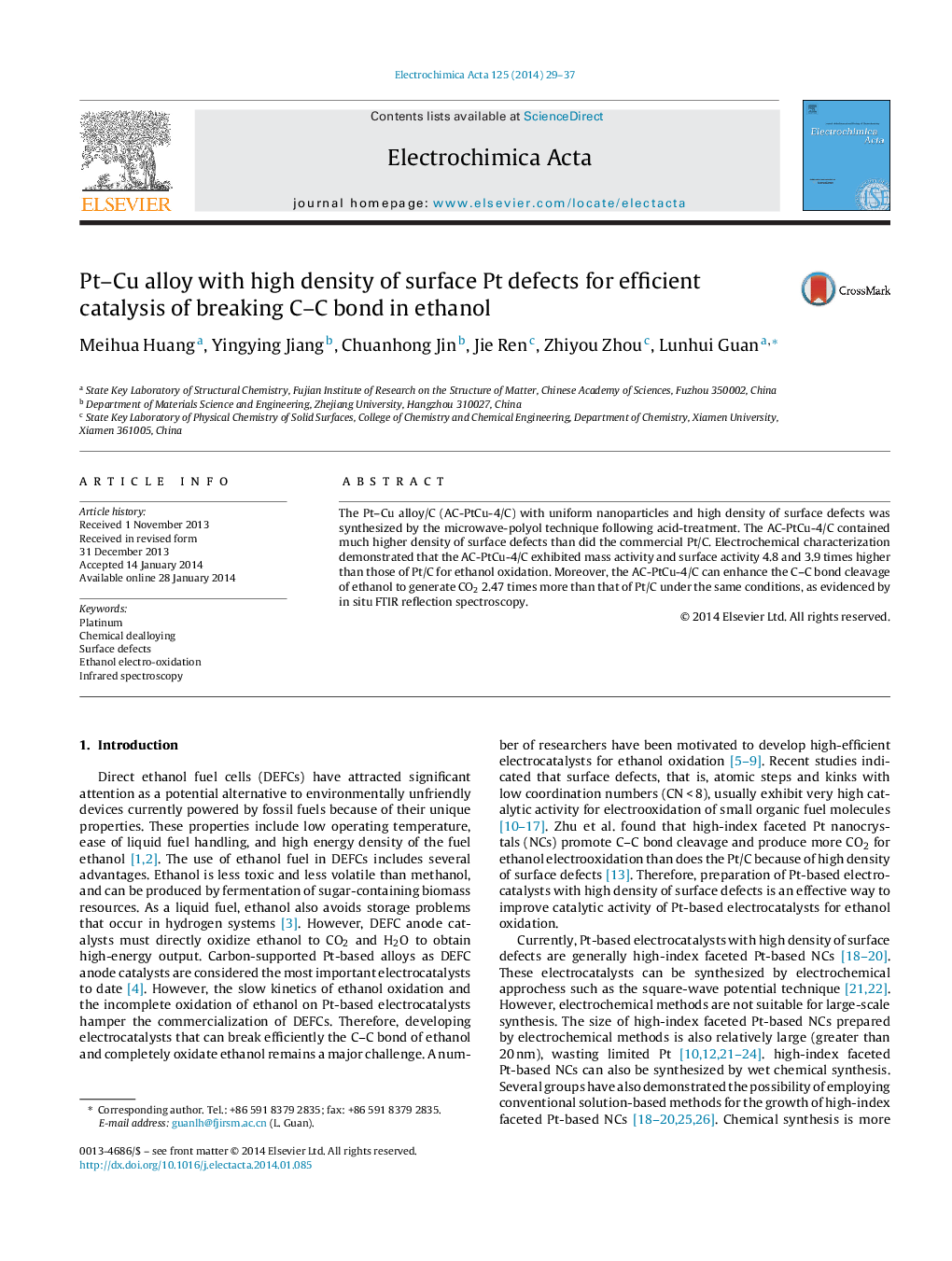| Article ID | Journal | Published Year | Pages | File Type |
|---|---|---|---|---|
| 186194 | Electrochimica Acta | 2014 | 9 Pages |
•The prepared AC-PtCu–4/C has higher density of surface defects.•The AC-PtCu–4/C has higher mass and surface activity for ethanol oxidation.•The AC-PtCu–4/C can enhance the C–C bond cleavage of ethanol to generate CO2.•The chemical dealloying is suitable to prepare highly active Pt-based catalysts.•The electrochemical dealloying results in large size and aggregation of particles.
The Pt–Cu alloy/C (AC-PtCu-4/C) with uniform nanoparticles and high density of surface defects was synthesized by the microwave-polyol technique following acid-treatment. The AC-PtCu-4/C contained much higher density of surface defects than did the commercial Pt/C. Electrochemical characterization demonstrated that the AC-PtCu-4/C exhibited mass activity and surface activity 4.8 and 3.9 times higher than those of Pt/C for ethanol oxidation. Moreover, the AC-PtCu-4/C can enhance the C–C bond cleavage of ethanol to generate CO2 2.47 times more than that of Pt/C under the same conditions, as evidenced by in situ FTIR reflection spectroscopy.
Graphical abstractThe AC-PtCu-4/C contained much higher density of surface defects than did the commercial Pt/C. Electrochemical characterization demonstrated that the AC-PtCu-4/C exhibited mass activity and surface activity 4.8 and 3.9 times higher than those of Pt/C for ethanol oxidation. Moreover, the AC-PtCu-4/C can enhance the C–C bond cleavage of ethanol to generate CO2 2.47 times more than that of Pt/C under the same conditions, as evidenced by in situ FTIR reflection spectroscopy.Figure optionsDownload full-size imageDownload as PowerPoint slide
